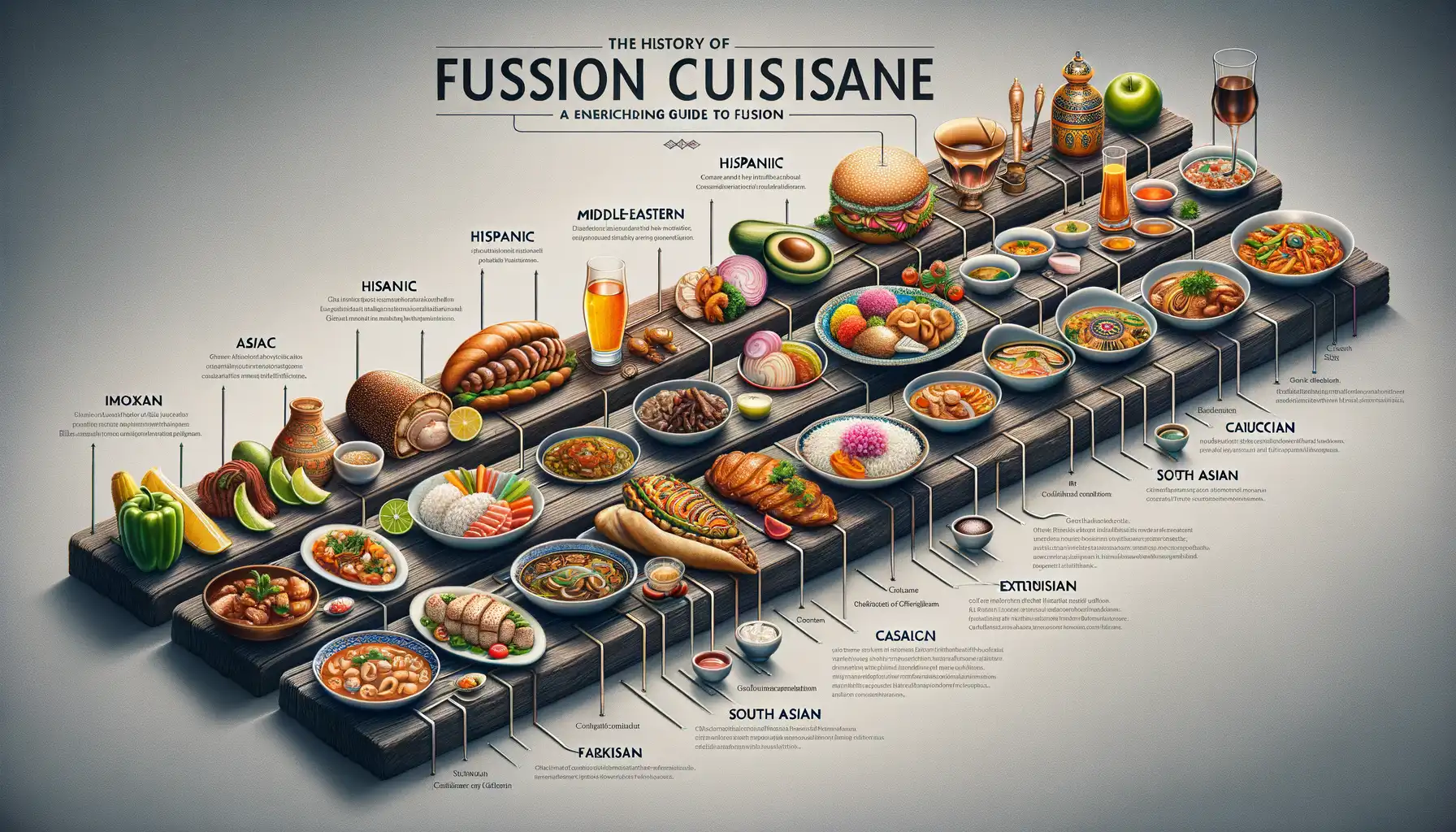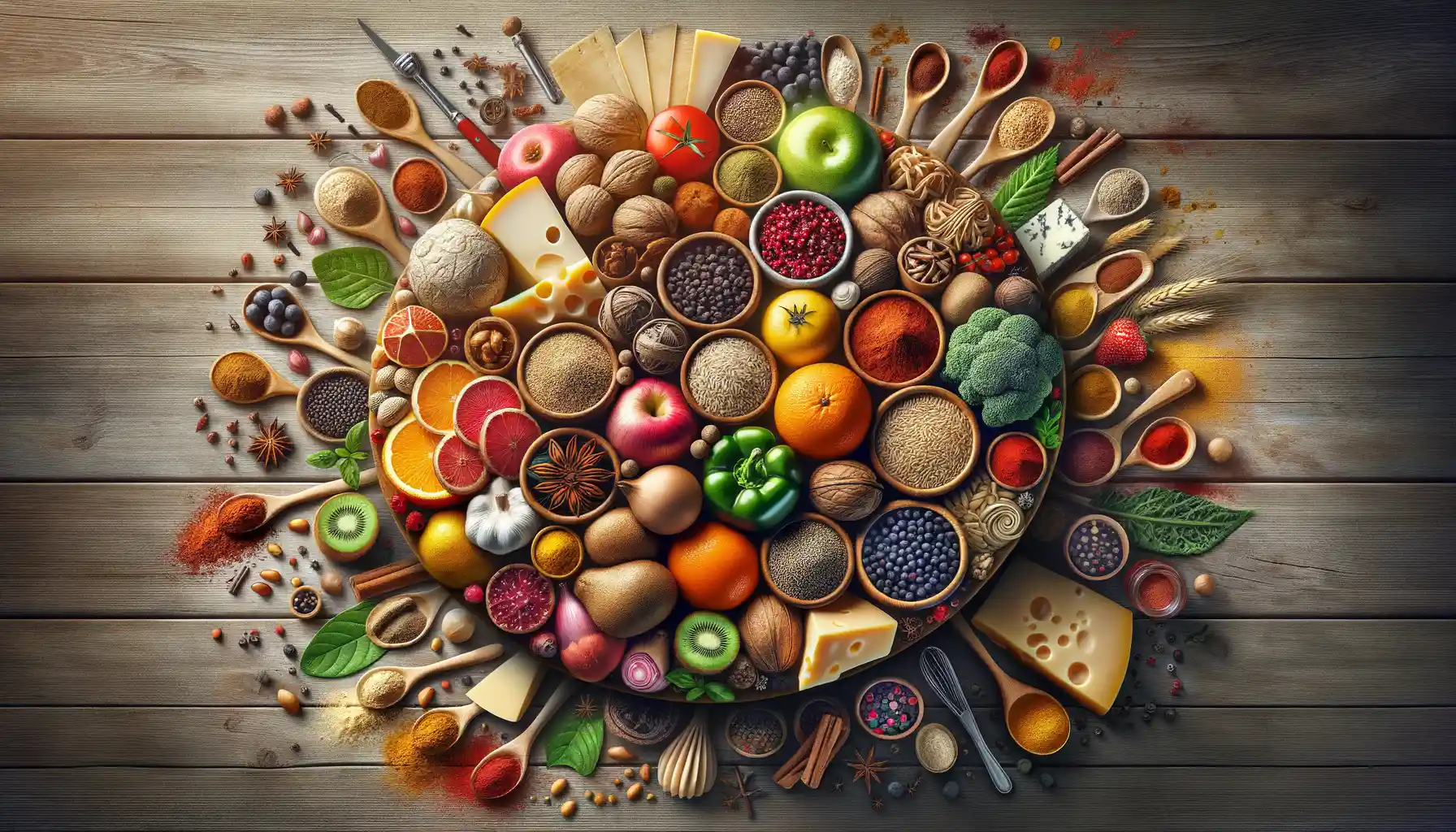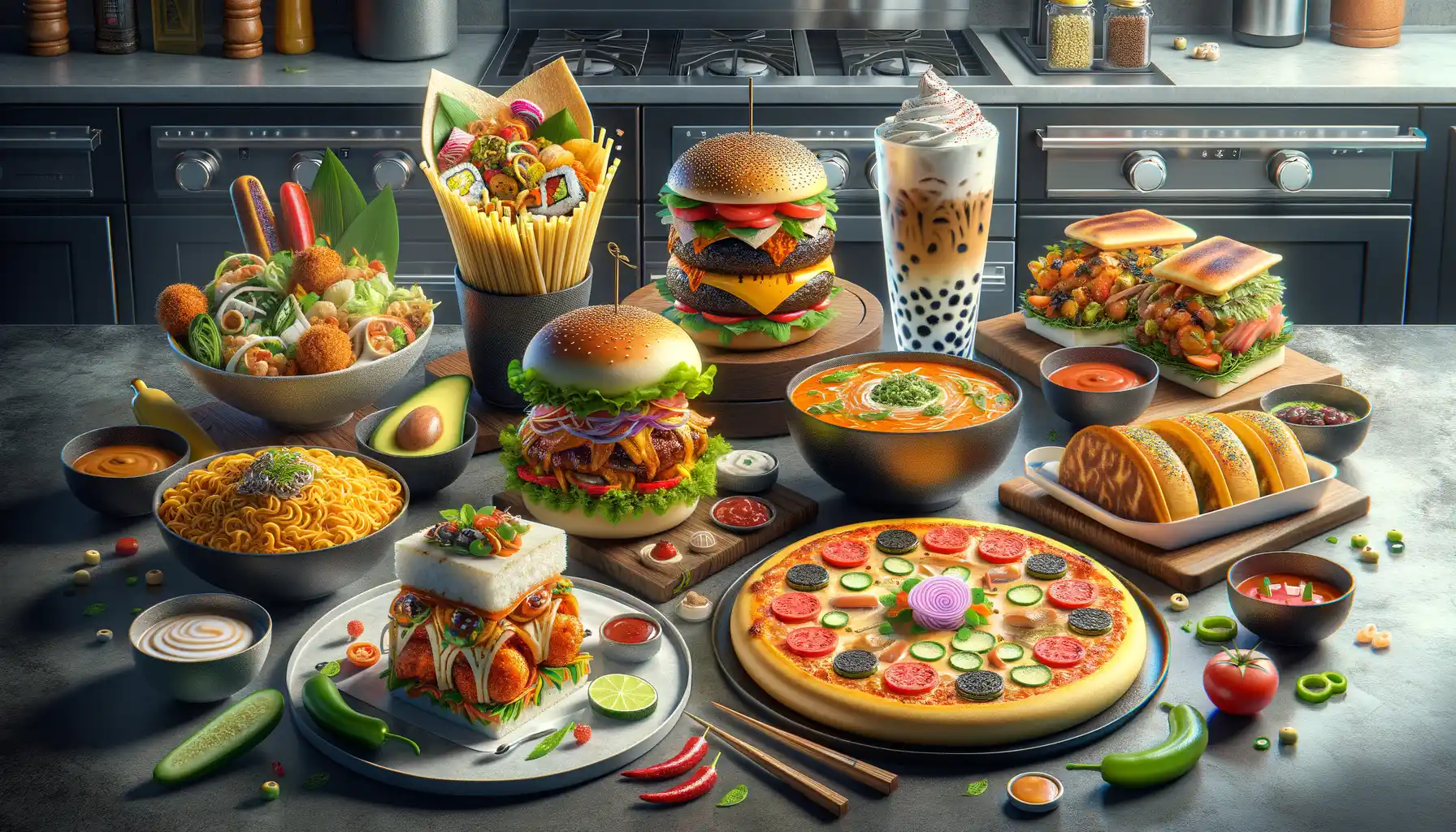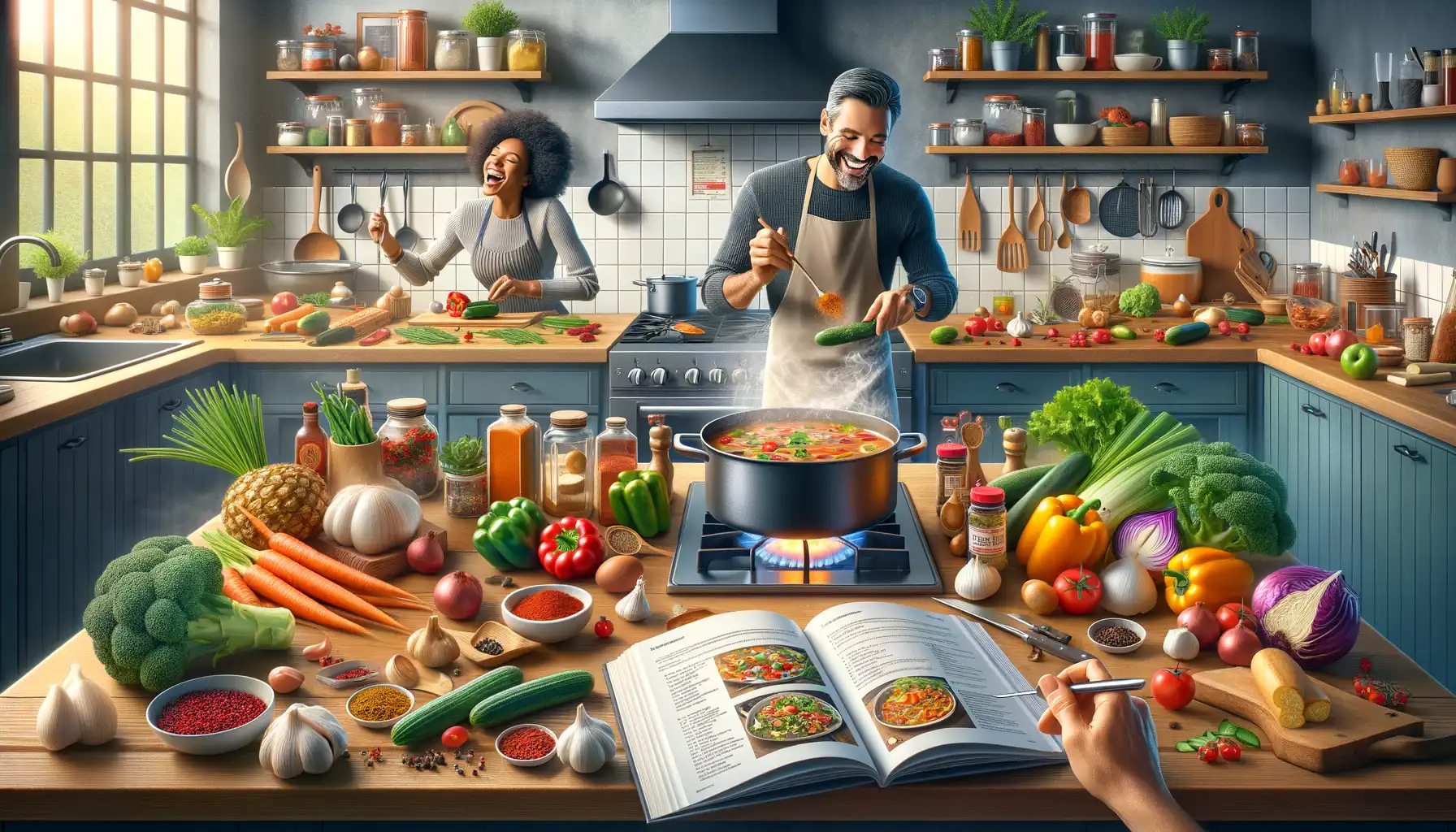Introduction to Fusion Cooking
Ever tasted the unexpected harmony of a sushi taco or savored the bold zing of an Indian-infused pizza? That’s the magic of fusion cooking—where culinary worlds collide to create something delightfully original. Imagine your kitchen as a playground, where spices, herbs, and techniques from different cultures come together to break all the rules. Sound exciting? It is—it’s a feast of creativity for those bold enough to experiment.
What Makes Fusion Cooking So Irresistible?
Fusion cooking thrives on the art of contrast and surprise. Think of it as storytelling through food. You’re taking familiar flavors—like the comforting warmth of Italian risotto—and giving them a twist, maybe by adding fiery Thai curry to shake things up. At its core, fusion cooking celebrates exploration and challenges the norm. No boundaries, just possibilities.
- You get the best of both worlds—rich French sauces meet earthy Mexican spices.
- It’s adaptable: use local ingredients to give global dishes a personal touch.
- Perfect for impressing guests with creative, conversation-starting meals.
Why Fusion Cooking Feels Like an Adventure
Every dish tells a story about cultures meeting, sometimes unexpectedly. Take tempura, for example—while we now think of it as a Japanese classic, did you know the technique was introduced by Portuguese missionaries? That’s the essence of fusion! Mixing the old and the new transcends flavor and creates experiences you’ll never forget. If food is language, then fusion is poetry.
The History and Evolution of Fusion Cuisine

Tracing Flavor Footsteps Through Time
Have you ever paused to imagine how a spicy Thai curry ended up mingling with Italian pasta? The story of fusion cuisine is an adventurous tale of trade routes, migrations, and shared dinner tables. Centuries ago, when explorers and merchants walked the Silk Road, they weren’t just carrying silk and spices—they were planting the seeds of culinary crossbreeding. Indian spices infused Middle Eastern stews. European vegetables transformed Asian stir-fries. These exchanges were the first whispers of fusion.
The story doesn’t stop there. Fast forward to colonial times, and the melting pot thickened. Portuguese explorers brought chilies to India, birthing the boldly spiced dishes we adore today. Think of Japan’s tempura—a crispy fried delight inspired by Portuguese missionaries. Or the sweet tang of Vietnamese bánh mì, a love letter to French baguettes combined with local herbs and pickles.
Fusion Gets a Modern Makeover
Today, fusion cuisine is less about necessity and more about creativity. Chefs worldwide push boundaries, transforming tradition into art. Take these surprising examples:
- Sushi burritos: A Japanese-Mexican mashup that’s as fun to eat as it sounds!
- Korean tacos: A sizzling blend of kimchi and barbecued meats wrapped in soft tortillas.
- Butter chicken pizza: India meets Italy in a cheesy, spicy creation.
The beauty of fusion lies in its freedom—two worlds can collide on a plate to make something utterly unforgettable. Are you ready to embrace the delicious chaos?
Techniques for Blending Global Flavors

Building Bridges Between Ingredients
Picture this: a rich, velvety coconut curry weaving its tropical warmth around tender gnocchi—a dish where **Thai spices** tango with an Italian classic. Fusion cooking thrives on these unlikely yet magical pairings. The secret? Understanding the building blocks of flavor, texture, and cultural context.
Start by identifying complementary flavor profiles. For instance:
- **Umami-rich soy sauce** with tangy balsamic vinegar (think Japan meets Italy).
- **Fragrant Indian cumin** hugging the smokiness of Mexican chipotle peppers.
- Sweet miso paste glazing roasted Brussels sprouts for a mouthwatering twist.
Pay attention to textures too—crispy tempura shrimp wrapped in warm tortillas creates a satisfying balance of crunch and chew. The best part? There are no hard rules. Let your inner chef rebel!
Spices: Your Passport to the World
Spices are tiny ambassadors of culture. Combining them smartly can transport your dish across continents in one bite. Imagine sprinkling **za’atar** over creamy mac and cheese—it’s like sending Grandma’s comfort food to a Mediterranean getaway. Or swirling **ras el hanout** into a classic French bouillabaisse, creating a broth as complex as a good novel.
Experiment but stay grounded. Rather than overpowering your dish with too many flavors, let each spice shine. After all, even in fusion, harmony is king.
Popular Examples of Fusion Dishes

The Art of Blending Cultures on a Plate
Fusion cooking is where culinary worlds collide, sparking creativity and unforgettable flavors. Ever tried a meal that felt like a passport to two places at once? That’s the magic of fusion dishes! Take the ever-iconic California Roll—born from Japanese sushi traditions but wrapped in creamy avocado and crab for an American twist.
Or how about indulging in the sweet and savory playfulness of Korean Tacos? The bold heat of Korean BBQ meets the zesty freshness of Mexican pico de gallo, all snuggled up in a warm tortilla. And let’s talk dessert: Matcha Cheesecake, anyone? A rich New York-style cheesecake infused with green tea goodness—it’s like Zen on a plate.
- Ramen Burgers: Juicy beef patties hugged by crispy noodle “buns.”
- Butter Chicken Pizza: Italian meets Indian in this tomato-y, creamy explosion.
- Wasabi Guacamole: A spicy, smooth dip that’s perfect for chip lovers everywhere.
Fusion food breaks all the rules, combining textures, cultures, and bold ideas. It’s edgy, comforting, and oh-so-satisfying. So why stay in one lane when your taste buds can explore the world?
Tips for Experimenting with Fusion Cooking at Home

Start Small and Get Playful
Fusion cooking is like painting a masterpiece with a fresh palette—it’s messy, thrilling, and deeply satisfying. Don’t feel like you need to reinvent the culinary wheel on your first try. Begin with familiar recipes and sneak in an unexpected twist. Love making tacos? Try stuffing them with Korean-inspired bulgogi instead of the typical beef filling. It’s a flavor bomb waiting to happen!
Experimentation thrives when you allow yourself the freedom to play. Keep ingredients like soy sauce, harissa, or coconut milk handy—they’re perfect for adding a global flair to your everyday dishes. And remember: mistakes aren’t failures; they’re happy accidents (and sometimes unexpectedly tasty ones).
Essential Tips to Nail Your Fusion Creations
- Balance is key: Pair bold spices from one cuisine with milder ingredients from another to create harmony on your plate.
- Understand the rules before breaking them: Research traditional flavor profiles and techniques to blend them creatively without clashing.
- Shop globally: Explore international markets for inspiration. That bottle of Japanese yuzu or jar of Indian garam masala could spark your next great idea!
Fusion cooking at home isn’t about perfection—it’s about curiosity and courage. Grab that whisk, follow your taste buds, and let your kitchen become your personal culinary laboratory!